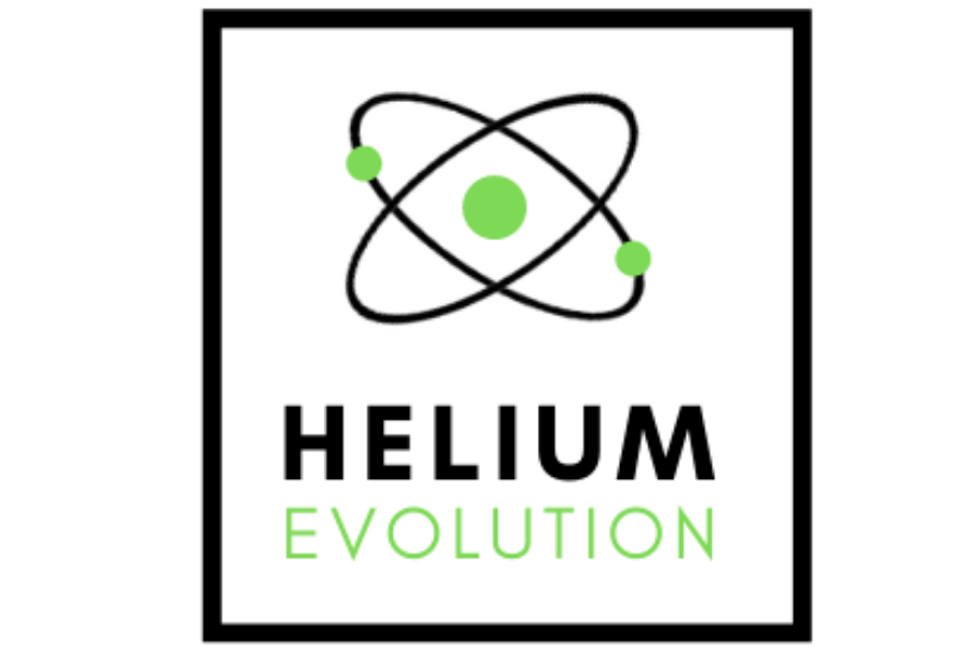- AustraliaNorth AmericaWorld
Investing News NetworkYour trusted source for investing success
- Lithium Outlook
- Oil and Gas Outlook
- Gold Outlook Report
- Uranium Outlook
- Rare Earths Outlook
- All Outlook Reports
- Top Generative AI Stocks
- Top EV Stocks
- Biggest AI Companies
- Biggest Blockchain Stocks
- Biggest Cryptocurrency-mining Stocks
- Biggest Cybersecurity Companies
- Biggest Robotics Companies
- Biggest Social Media Companies
- Biggest Technology ETFs
- Artificial Intellgience ETFs
- Robotics ETFs
- Canadian Cryptocurrency ETFs
- Artificial Intelligence Outlook
- EV Outlook
- Cleantech Outlook
- Crypto Outlook
- Tech Outlook
- All Market Outlook Reports
- Cannabis Weekly Round-Up
- Top Alzheimer's Treatment Stocks
- Top Biotech Stocks
- Top Plant-based Food Stocks
- Biggest Cannabis Stocks
- Biggest Pharma Stocks
- Longevity Stocks to Watch
- Psychedelics Stocks to Watch
- Top Cobalt Stocks
- Small Biotech ETFs to Watch
- Top Life Science ETFs
- Biggest Pharmaceutical ETFs
- Life Science Outlook
- Biotech Outlook
- Cannabis Outlook
- Pharma Outlook
- Psychedelics Outlook
- All Market Outlook Reports
Brad Gabel of Canamax talks about the current state of the oil market, what his company has been doing to cope with the downtrodden oil price and what investors can expect from Canamax and the market in the future.
Gabel has an interesting perspective on the oil market due to the unique nature of his company, which is primarily focused on the acquisition of micro- to small-cap companies and the exploration of oil and gas assets. The company started back in September 2013 and has since done numerous deals to establish a focus on its Flood and Wapiti properties.
In the interview below, Gabel talks about the current state of the oil market, what his company has been doing to cope with the downtrodden oil price and what investors can expect from Canamax in the future.
RIN: What is Canamax doing to cope with the poor oil price?
BG: Coping with low oil prices is something everyone has to deal with, and there aren’t a lot of projects in North America that have any sort of reasonable rate of return. Even when oil is at $60 to $65 a barrel the risk vs. reward on drilling is just not there on most plays. Specifically, plays that are developed horizontally, the decline rates are so high that you need to recycle that capital; if you don’t have a high enough netback in that flush production phase, it makes it so that the payout terms become too long and uneconomical. So companies now, I think, are moving more towards trying to maintain production by optimization and minimal drilling and are looking towards preserving their capital. If you can buy it cheaper than you can drill it on a BOE basis, unrisked, it just makes a lot more sense.
That’s our primary focus in 2015. Our ultimate view is that commodities prices will not sustain at these levels because the economics don’t dictate enough development capital to be allocated towards new drills. There are some people that say we won’t $100 oil again, but those are the same people that were saying we would never see $50 oil again six months ago.
The nice thing is our company is small enough that we can adapt quickly to any changes in the operating environment. If things get stronger as we move into the third or fourth quarter and cash flows increase, we can ramp up our drilling programs pretty easily as we’ve got a large inventory of existing development locations. So we can increase that, or we can remain static for the rest of the year and continue to focus on acquisitions. The company will do its best for shareholders based on what the returns look like on the two aspects. We can either focus on acquisitions or on the development of our existing properties.
RIN: Can you elaborate on Canamax’s goals in this difficult market?
BG: With the collapse of commodities prices, the ultimate goal of the company today is rather than spend a lot of capital on the drill bit, we will move back towards capturing assets and either adding to our existing core areas or adding another core area through either an asset acquisition from a larger company that is divesting some non-core areas or looking at some corporate transactions that may have the ability to bring in another core area.
One of the things that we are seeing now that we were not seeing back in spring 2014 through to the fall of 2014 was companies were unwilling to transact on better-quality assets. Now companies are starting to rationalize and are looking at re-positioning their businesses and selling off some of these non-core areas; that’s enabling people that want to consolidate and build new businesses to get access to some quality assets that would not have been available for sale back in mid-2014.
RIN: What do you think sparked this change?
BG: It’s primarily leverage. Most companies have some form of financial debt. When you see such a large collapse in commodities prices, that leverage goes up materially in terms of multiple debt to cash flow, and a lot of companies are pushing the limits and/or exceeding the limits of their financial covenants, which puts them in a situation where divesting makes a lot of sense. I think other companies are trying to position their businesses eventually for sale, and companies that tend to get bought for good multiples have good positions in core areas and don’t have a lot of smaller pieces that may not fit within that size a company. So every company is different in its peer groups; the small guys need to have a couple of core areas — you can have some scattered assets, but ultimately they should have what we consider core areas that have got lots of running room for continued development. Assets that are really looking positive today are medium- to high-API oil.
We’re really focused on those types of assets — ones that have low operating costs, low decline rates and reasonable upside in terms of future development.
RIN: Do you see the oil price making a comeback any time soon? If so, what do you think will be the driving force(s) behind a price boost?
BG: There are so many fundamentals that go into dictating price, and obviously today the supply/demand curve is out of whack. We’ve got more supply than we do demand, and often lower prices will increase demand. Demand is much higher in the second half of the year worldwide than it is in the first, so I do believe going into the second half of the year we’ll see stronger commodities prices, excluding any geopolitical risks or lack thereof that come into the commodity.
Those are always the things that make it so hard. If nothing changes, yes you can come up with a very static pricing environment with moderate increases, but as we all know, geopolitical issues may result in supply disruptions that happen all the time and will happen again. So that’s why it is so difficult to predict, but that also creates the opportunity.
I believe in the long term, oil fundamentals are much more positive moving into 2016 and 2017, where we could see oil in the $75 to $85 range. You never know what happens to the supply side that changes things materially in a short period of time. We have even started to see that. People were predicting $40 oil for quite some time for the rest of this year — now it’s almost back at $60. There really hasn’t been a strong supply or demand change fundamentally in the last few months that has created the change. Production starting to roll over in the US at some of these big, high-decline fields gives some optimism that supply is going to start to come into check.
And again, as you move into the latter half of the year and demand starts increasing materially, that supply-demand gap will definitely start to narrow.
RIN: Can you tell us about Canamax’s royalty arrangement?
BG: We entered a royalty agreement with Maple Leaf to drill six vertical wells on our Flood property, so that’s the capital we have allocated this year to new drilling. I think that it ended up working quite well in our favor because it limits the amount of capital we have to put to work and significantly increases our rate of return on that capital.
So what happens is Maple Leaf funds the first $425,000 for each one of these wells. This brought up our rate of return up materially, which is good for Canamax shareholders. For their contribution we end up paying them a royalty on the production, which decreases after payout. It’s a way where they get to buy into a play with very little risk because we’ve already put the land together, the infrastructure, we have the operating team, we carry on the ongoing operations of the well, but they get to participate financially. So they get a smaller return overall and we get to use their money to develop our property. Often they get a lower return, but they get a safer return because its de-risked.
RIN: Any upcoming acquisitions investors might want to keep an eye on?
BG: We’ve evaluated in some form or fashion the better part of 100 companies in the last year. There is still a gap in the bid/ask on many of these acquisitions. However, that gap is starting to narrow, and I would say we have five to seven targets that are highly prospective that we think would be good candidates for some form of acquisition or business combination.
Securities Disclosure: I, Kristen Moran, hold no direct investment interest in any company mentioned in this article.
Editorial Disclosure: The Investing News Network does not guarantee the accuracy or thoroughness of the information reported in the interviews it conducts. The opinions expressed in these interviews do not reflect the opinions of the Investing News Network and do not constitute investment advice. All readers are encouraged to perform their own due diligence.
Related reading:
Outlook Reports
Featured Energy Investing Stocks
Browse Companies
MARKETS
COMMODITIES
| Commodities | |||
|---|---|---|---|
| Gold | 2377.41 | -2.52 | |
| Silver | 28.24 | 0.00 | |
| Copper | 4.50 | +0.04 | |
| Oil | 82.29 | -0.44 | |
| Heating Oil | 2.54 | -0.01 | |
| Natural Gas | 1.75 | -0.01 | |
Investing News Network websites or approved third-party tools use cookies. Please refer to the cookie policy for collected data, privacy and GDPR compliance. By continuing to browse the site, you agree to our use of cookies.






